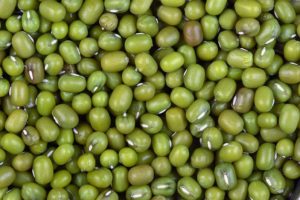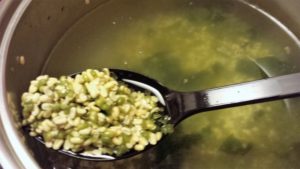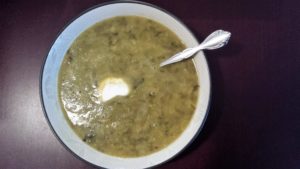I have a sweet tooth. I admit that with not a little shame, given my quest for healthy living. My first realization that I had a sweet tooth was after reading Sydney Omarr’s “If you are born today” horoscope in our daily paper when I was a kid. I wasn’t sure what it meant; I had to ask. Apparently, one of the hallmarks of my day/month/year astrological combo is craving sweets. (Aha! I was born that way!) I thought back to trips to Farrell’s, the outrageously obnoxious ice cream parlour, for birthdays (think sugar-fueled Chuck E. Cheese). After eating cake and ice cream, we would stop by their candy shop on the way out. We were allowed one piece of candy to take home. My favorite was white rock candy, which is basically just sugar on a stick. Not even any food coloring or flavoring to liven it up. I’d finish it on the ride home and be in a sugar coma the rest of the day.
As mentioned before in this blog, sugar is known as “white death” in Traditional Chinese Medicine (TCM). It has no nutritional value, and negatively impacts the immune system. It’s in abundance during the winter holidays, leading many of us to partake and then wonder why we’re heavier and sick (“Must just be winter!”). As much as I try to keep temptation out of the house, it always sneaks in during the holiday season. Gifts of homemade cookies (I love my mother-in-law’s snowballs), white elephant gifts at parties (look who got Trader Joe’s flight of dark chocolate caramels!), and even leftover Halloween candy from our exchange student’s trek through the neighborhood (shudder!). There is only so much willpower.
But after the new year – at least until Valentine’s Day – common sense returns along with a little remorse and resolve to eat better. If you’re looking for an easy, nutritious and yummy way to detox after the holidays, this is the recipe for you!

Kicharee is an Indian dish consisting of rice and dahl – or mung beans – and spices. According to TCM herbalist Michael Tierra, kicharee:
- Forms a complete protein (legumes and whole grains).
- Is a perfect fasting/detoxifying food for all body types.
- Regulates blood pressure.
- Treats hypoglycemia, late-onset diabetes, and skin conditions.
- Is a cure-all (a fast of kicharee for 10-30 days is used in India to help cure many diseases).
Don’t let the word “bean” intimidate you. The key is to soak the beans ahead of time for at least 12 hours. I use this recipe several times a month. I love how it sustains my energy throughout the day, even avoiding an afternoon “slump” without caffeine.
Mung beans can be hard to find. I purchase mine online or at natural food stores (I find it odd/sad/telling that we have the term “natural food store”, but it’s certainly accurate).
Kicharee (Indian stew) Recipe
2 cups mung beans
3 teaspoons ghee or sesame oil
1/2 teaspoon turmeric
2 teaspoons cumin seed (3 teaspoons if powdered)
3 teaspoons coriander, ground
1/2 teaspoon sea salt
Seaweed (optional – 4 inch piece of kombu seaweed is a good complement.)
- After washing and soaking, strain and rinse the beans.
- Put in pressure cooker or regular pot with 3-4 inches of lukewarm water.
- Bring pot to pressure and cook 10-15 minutes. Turn off and let cook without opening. (If using regular pot, cook for up to 45 minutes.)
- Warm ghee or sesame oil in wide frying pan. Add spices and cook until browned.
- When pressure is down on beans, open pot and add spices.

- Add a little more ghee (or sesame oil) and salt to taste.
- Turn up heat, remove lid, and cook for another 5-10 minutes. (It should be quite soupy.)
- Serve by itself, or over precooked rice. (You may sauté onion, garlic and/or other veggies or spices and add to the mixture. I added a dollop of sour cream to mine. Plain yogurt also works.)

You can have the beans over rice, or just by themselves. You can also add in vegetables such as onions or carrots, and/or cook your rice in beef or chicken stock.
NOTE: Remember to soak your beans and rice (separately) at least overnight. I typically soak the mung beans for about a day-and-a-half. Those suckers absorb water like crazy, so use a bowl twice as big as you would think you’d need and keep adding water to keep them covered.
